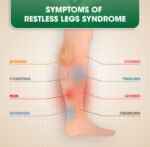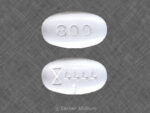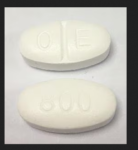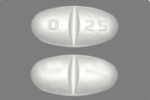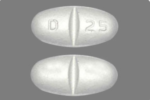The total number of patients treated with Neurontin in controlled clinical trials in patients with postherpetic neuralgia was 336, of which 102 (30%) were 65 to 74 years of age, and 168 (50%) were 75 years of age and older. Totally 80% Gabapentin patients are seniors.
There was a larger treatment effect in patients 75 years of age and older compared with younger patients who received the same dosage.
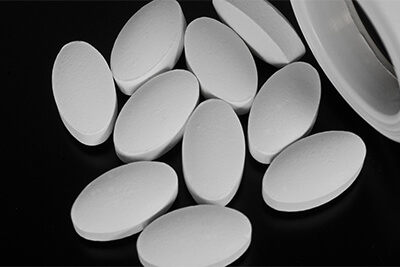
Since gabapentin is almost exclusively eliminated by renal excretion, the larger treatment effect observed in patients ≥ 75 years may be a consequence of increased gabapentin exposure for a given dose that results from an age-related decrease in renal function. However, other factors cannot be excluded. The types and incidence of adverse events were similar across age groups except for peripheral edema and ataxia, which tended to increase in incidence with age.
Clinical studies of Neurontin in epilepsy did not include sufficient numbers of subjects aged 65 and over to determine whether they responded differently from younger subjects. Other reported clinical experience has not identified differences in responses between the elderly and younger patients.
In general, dose selection for an elderly patient should be cautious, usually starting at the low end of the dosing range, reflecting the greater frequency of decreased hepatic, renal, or cardiac function, and of concomitant disease or other drug therapy.
This drug is known to be substantially excreted by the kidney, and the risk of toxic reactions to this drug may be greater in patients with impaired renal function. Because elderly patients are more likely to have decreased renal function, care should be taken in dose selection, and dose should be adjusted based on creatinine clearance values in these patients
Pediatrics: The safety and efficacy in patients under the age of 18 have not been established.
Safety data in 39 patients between the ages of 12 and 18 years included in the double-blind, placebo-controlled trials showed that, at doses of 900 to 1200 mg/day, the incidence of adverse events in this group of patients was similar to that observed in older individuals.
In controlled clinical trials involving patients, 3 to 12 years of age (N=323), psychiatric adverse events such as emotional lability, hostility, hyperkinesia and thought disorder were reported at a higher frequency in patients treated with gabapentin compared to placebo.
Geriatrics: Systematic studies in geriatric patients have not been conducted. Adverse clinical events reported among 59 patients over the age of 65 years treated with Neurontin did not differ from those reported for younger individuals. The small number of individuals evaluated and the limited duration of exposure limits the strength of any conclusions reached about the influence of age, if any, on the kind and incidence of adverse events associated with the use of Neurontin.
Gapapentin for Neuropathic Pain
Gabapentin (Neurontin) has FDA indication to treat postherpetic neuralgia and partial onset seizures. Controlled clinical trials in diabetic neuropathy and postherpetic neuralgia show that gabapentin at 2400-3600 mg/day has a similar efficacy to tricyclic antidepressants and carbamazepine. Consistent, though less compelling clinical evidence supports its use for neuropathic cancer pain, pain associated with HIV infection, chronic back pain and others (readers wanting more in depth research findings are urged to consult Reference 1). Due to this emerging evidence, it is widely used for the treatment of neuropathic pain. The exact mechanism and site of action of gabapentin is unknown. Gabapentin is generally well-tolerated, easily titrated, has few drug interactions, and does not require laboratory monitoring. However, cost may be a limiting factor for some patients. Patients suitable for gabapentin should have a clear neuropathic pain syndrome, characterized by sharp, shooting, lancinating and/or burning pain, in a nerve root (radicular) or stocking/glove distribution. See Fast Fact #289 for a comparison of gabapentin with pregabalin a similar neuropathic analgesic.
Adult Dosing Gabapentin is started at low doses (100 mg to 300 mg total daily) and increased by 100 – 300 mg every 1-3 days to effect. A typical schedule might be: day 1-2: 300 mg nightly; day 3-4: 300 mg twice daily; day 5-7: 600 mg twice daily; day 8 onwards: 600 mg three times a day. The usual effective total daily dose is 900-3600 mg, administered in three divided doses per day. Titration should proceed more slowly in elderly patients. If gabapentin is discontinued, it should be done over a minimum of a week to prevent withdrawal seizures.
Pediatric Use There is limited data available assessing its effectiveness in neuropathic pain in children. The American Pain Society recommends that gabapentin be considered for pediatric neuropathic pain especially when concurrent analgesics are found to be too sedating. Their recommended initial dose is 2 mg/kg/day with a usual dosage range of 8 to 35 mg/kg/day divided into 3 daily doses.
Dosing in Renal Failure Gabapentin doses must be reduced for patients with renal insufficiency.
- Creatinine Clearance (CrCl) 30-60 ml/min: maximum daily dose is 1400 mg, divided.
- CrCl 16-30 ml/min: maximum daily dose is 700 mg, given once daily.
- CrCl 15ml/min: maximum daily dose is 300 mg, once daily. Doses should decrease proportionally for CrCl less than 15 ml/min (e.g. 300 mg every other day for a CrCl of ~7.5 ml/min).
- For patients on hemodialysis a supplemental dose is usually given after dialysis (usually 100-300 mg).
Adverse Reactions Sedation, confusion, dizziness, and ataxia are the most common side effects, especially with rapid dose titration. Tolerance to these effects appears to develop within a few days if the dose is held at the highest tolerated dose until symptoms improve or stabilize.
Dosage Formulations Gabapentin is available in 100 mg, 300 mg, and 400 mg capsules, 600 mg and 800 mg tablets, and as a liquid (250mg/5mL).
Cost Gabapentin is more expensive than older agents used for neuropathic pain (tricyclic antidepressants and older anti-epileptic drugs such as carbamazepine). Generic gabapentin is available, although can cost ~$100 for 90 600 mg tablets.
Other Palliative Care Uses of Gabapentin Small scale published trials have shown efficacy in the treatment of severe chronic hiccups, pruritus, postoperative pain and delirium, restless leg syndrome and hot flashes. Perhaps more compelling is its potential efficacy for chronic cough for which a randomized double-blind placebo controlled trial demonstrated significant improvement in cough-specific quality of life, cough frequency, and cough severity. See Fast Fact #200.
Summary Gabapentin is a safe and effective adjuvant analgesic for neuropathic pain. Physicians should become comfortable using and titrating gabapentin in patients with neuropathic pain syndromes.
References
- Moore R, Wiffen PJ, Derry S, Toelle T, Rice AS C. Gabapentin for chronic neuropathic pain and fibromyalgia in adults. Cochrane Database of Systematic Reviews 2014, Issue 4. Art. No.: CD007938. DOI: 10.1002/14651858.CD007938.pub3
- Mishra S, Bhatnagar S, et al. A comparative efficacy of amitriptyline, gabapentin, and pregabalin in neuropathic cancer pain: a prospective randomized double-blind placebo-controlled study. American Journal of Hospice and Palliative Medicine 2012;29:177-182.
- Caraceni A, et al. Gabapentin for neuropathic cancer pain: a randomized controlled trial from the gabapentin cancer pain study group. J Clin Onc. 2004; 22:2909-2917.
- American Pain Society. Principles of Analgesic Use in the Treatment of Acute Pain and Cancer Pain. 6th ed, Glenview, IL: American Pain Society, 2008.
- Micromedex Drug Database. Thompson Reuters. http://www.micromedex.com.
- Giampiero P, Aielli F, et al. Gabapentin in the treatment of hiccups in patients with advanced cancer: a 5-year experience. Clin Neuropharm 2010; 33:179-180.
- Anand S, Gabapentin for pruritus in palliative care. Am J of Hospice and Pall Med 2012; 30:192-196.
- Dauri M, Faria S, Gatti A, et al. Gabapentin and Pregabalin for the Acute Post-operative Pain Management. A Systematic-Narrative Review of the Recent Clinical Evidences. Curr Drug Targets 2009, 10(8):716-33.
- Leung JM, Sands LP, et al. Pilot clinical trial of gabapentin to decrease postoperative delirium in older patients. Neurology. 2006; 67:310-314.
- Saletu M, Anderer P, Saletu-Zyhlarz GM, et al. Comparative Placebo-Controlled Polysomnographic and Psychometric Studies on the Acute Effects of Gabapentin Versus Ropinirole in Restless Legs Syndrome. J Neural Transm 2010, 117(4):463-73.
- Butt DA, Lock M, Lewis JE, et al. Gabapentin for the Treatment of Menopausal Hot Flashes: A Randomized Controlled Trial. Menopause 2008; 15(2):310-8.
Version History: This Fast Fact was originally edited by David E Weissman MD. 2nd Edition published August 2005; 3rd Edition May 2015. Version re-copy-edited April 2009; then again May 2015; renal dosing information adjusted to reflect current recommendations, and updated cost information added.
Fast Facts and Concepts are edited by Sean Marks MD (Medical College of Wisconsin) and associate editor Drew A Rosielle MD (University of Minnesota Medical School), with the generous support of a volunteer peer-review editorial board, and are made available online by the Palliative Care Network of Wisconsin (PCNOW); the authors of each individual Fast Fact are solely responsible for that Fast Fact’s content. The full set of Fast Facts are available at Palliative Care Network of Wisconsin with contact information, and how to reference Fast Facts.
Copyright: All Fast Facts and Concepts are published under a Creative Commons Attribution-NonCommercial 4.0 International Copyright (http://creativecommons.org/licenses/by-nc/4.0/). Fast Facts can only be copied and distributed for non-commercial, educational purposes. If you adapt or distribute a Fast Fact, let us know!
What Should You Be Careful While You Are Taking Gabapentin ?
Gabapentin can cause problems, especially if it is not used as directed or if certain precautions are not followed. Some potential issues associated with gabapentin use include:
- Side Effects: Common side effects of gabapentin include dizziness, drowsiness, fatigue, coordination problems, blurred vision, and weight gain. These side effects are usually mild to moderate and often improve over time. However, some individuals may experience more severe or persistent side effects.
- Dependency and Withdrawal: Although gabapentin is not considered a controlled substance, there have been reports of dependence and withdrawal symptoms, especially in individuals who misuse or abuse the medication. Withdrawal symptoms may include anxiety, insomnia, nausea, sweating, and flu-like symptoms.
- Interaction with Other Medications: Gabapentin can interact with certain medications, including opioids, benzodiazepines, and other central nervous system depressants. Combining gabapentin with these substances can increase the risk of sedation, respiratory depression, and overdose.
- Suicidal Thoughts and Behavior: Gabapentin and other antiepileptic drugs have been associated with an increased risk of suicidal thoughts and behavior. Patients taking gabapentin should be closely monitored for changes in mood, behavior, or suicidal ideation, especially when starting or changing the dose of the medication.
- Allergic Reactions: Some individuals may experience allergic reactions to gabapentin, which can manifest as rash, itching, swelling, or difficulty breathing. In rare cases, severe allergic reactions such as Stevens-Johnson syndrome or toxic epidermal necrolysis may occur, which require immediate medical attention.
- Renal Impairment: Gabapentin is primarily eliminated from the body through the kidneys. Therefore, individuals with impaired kidney function may require dose adjustments or closer monitoring to prevent accumulation of the medication and potential toxicity.
- Cognitive Impairment: Some individuals may experience cognitive impairment, memory problems, or confusion while taking gabapentin, especially at higher doses or in combination with other medications.
Pain Medications, Pain Relief, and Pain Management
